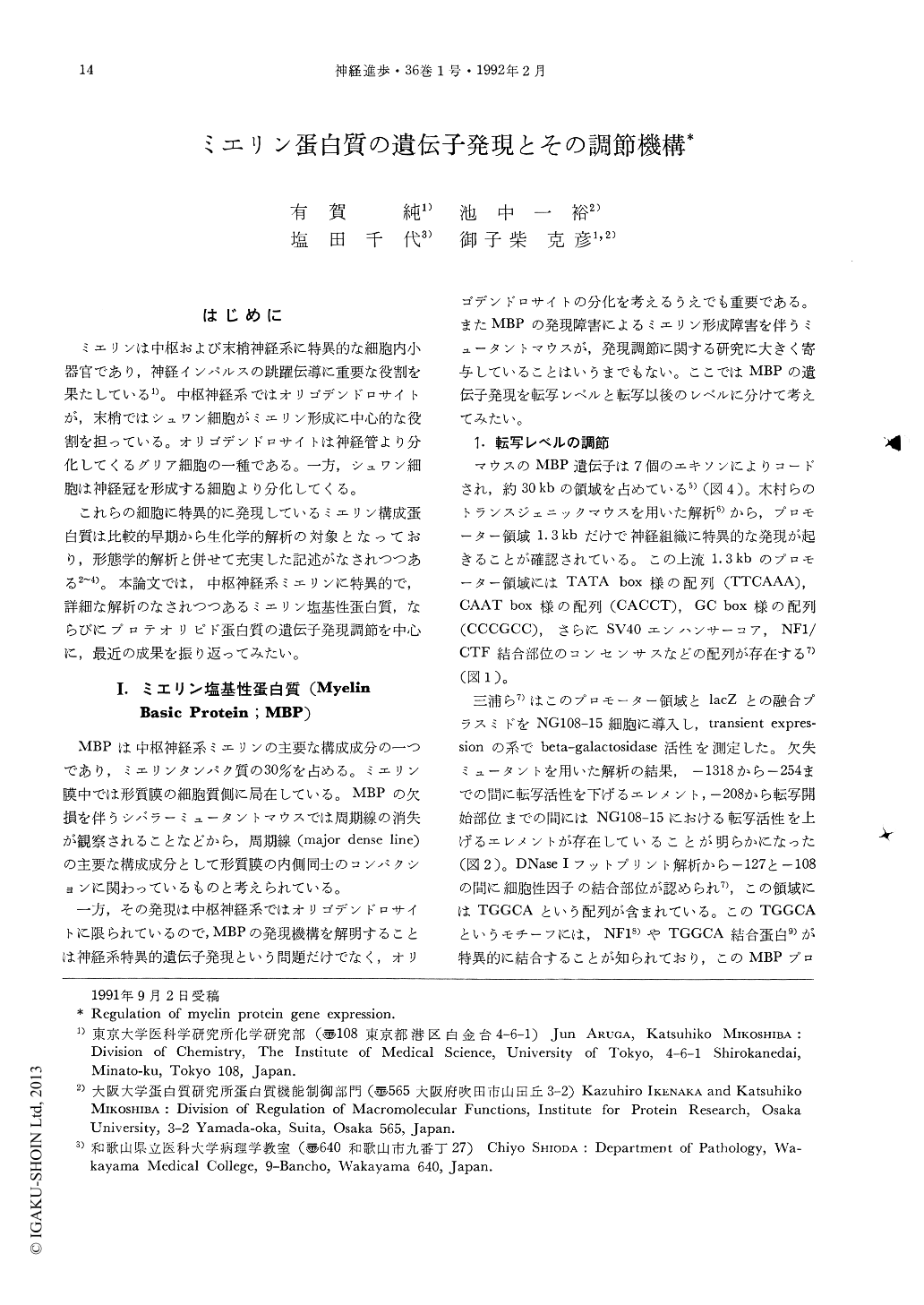Japanese
English
- 有料閲覧
- Abstract 文献概要
- 1ページ目 Look Inside
はじめに
ミエリンは中枢および末梢神経系に特異的な細胞内小器官であり,神経インパルスの跳躍伝導に重要な役割を果たしている1)。中枢神経系ではオリゴデンドロサイトが,末梢ではシュワン細胞がミエリン形成に中心的な役割を担っている。オリゴデンドロサイトは神経管より分化してくるグリア細胞の一種である。一方,シュワン細胞は神経冠を形成する細胞より分化してくる。
これらの細胞に特異的に発現しているミエリン構成蛋白質は比較的早期から生化学的解析の対象となっており,形態学的解析と併せて充実した記述がなされつつある2~4)。本論文では,中枢神経系ミエリンに特異的で,詳細な解析のなされつつあるミエリン塩基性蛋白質,ならびにプロテオリピド蛋白質の遺伝子発現調節を中心に,最近の成果を振り返ってみたい。
Myelin is an important structure for facilitating the conduction of nerve impulses along the axons both in the central nervous system (CNS) and peripheral rervous system (PNS). In the CNS, oligo-dendrocytes send out processes to recognize the nearby axons and wrap them forming compact lamellae. Myelin basic protein (MBP) and myelin proteolipid protein (PLP) are specifically expressed in oligodendrocyte. Therefore, the studies on the regulation of MBP and PLP gene expression would be expected to yield much information on the molecular mechanism of oligodendrocyte differentiation, as well as the system of gene expression in the nervous system. Moreover, defect in expression of these proteins, results in abnormal myelin lamellae formation causing abnormal behavior such as intentional tremor. Myelin is a convenient model for correlating the changes in molecules with behavior and morphology.

Copyright © 1992, Igaku-Shoin Ltd. All rights reserved.


